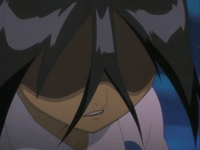Through my many years as a Manga reader, I find that this industry's style changes little by little - any big leaps can be seen only after a generation has passed.
Just look at the samples through the decades from my previous posts to see what I mean - you can tell which one looks less refined. Those would be from the 50s or 60s, when Manga first boomed in the Japanese market, just at the beginning of becoming a well loved cultural icon of the nation.
The others are those Manga masters' (mainstream) legacies - the fans(independents) who grew up on their work and go on to produce their own.
and I find that these changes in happen when new blood infuse the market:
One example would be the Naruto Mangaka, Masashi Kishimoto - he openly admits to his fans that he takes inspiration from Dragon Ball's artist, Akira Toriyama and
Akira, by Katsuhiro Otomo
 (A Page from Dragon Ball by Akira Toriyama)
(A Page from Dragon Ball by Akira Toriyama)
 (A Page from Naruto by Masashi Kishimoto)
(A Page from Naruto by Masashi Kishimoto)
Naruto's style does look like a combination of both Dragon Ball and Akira mangas. However, the real changes happened when the Naruto Mangaka got trained by the Mega-publishing house, Shonen publishing - they gave him a more refined edge in his works.

(Naruto Pilot Manga, that the demo Manga he submitted to Shonen publishing)
Click here to view Kishimoto's interview
Then, there are also independent groups - in this case, an actual Doujin group (Amature Manga producers) made it big time. This group is called
CLAMP.
They started as a group of 17 high school girls, where only 4 of them remained and made it big. What fans say made them big was the breakthrough combo of good shojo art with decent shonen storylines. So, you could say they revolutionized the genre for that niche of girl readers - girls back then were wowed by material that held more water than the typical romance drama Manga of those years.
Among their famous works would be X/1999 - where they broke the traditions of Shojo and Shonen Mangas. They combined the feminine style of Shojo with an action-filled storyline, which you would only expect from a Shonen Manga back then.


They still continue to wow the Manga/Anime audiences today. Works like XXXholic were known for their unique combination of Art Nouveau and traditional Japanese aesthetics.
Their new work continues to inspire current generations. I expect one day, they would also have a small ring of artists that would published work inspired by them - like how Dragon Ball's Toriyama has followers like Naruto's Kishimoto.














